Every EV That Qualifies For The Inflation Reduction Act Tax Credit In 2023

Earlier this week, the Senate passed the Inflation Reduction Act. It tamps down drug prices (for people on Medicare, at least), invests in the environment, and pays for it all with increased corporate taxes. But you’re not here for any of those — you’re here for the cars.
The Inflation Reduction Act also extended the $7,500 tax credit we all know and love, but added a number of stipulations. While many of them won’t kick in until the end of 2022, or even years down the line, one major caveat will: A mandate that all EVs, in order to qualify, must undergo final assembly in North America.
Read more
But which EVs are actually built here? The American automakers, sure, but what other companies have plants that qualify? If only there were some singular list, some resource that identified every U.S.-market EV that’s assembled in America. Someone should make that.
(I did.)
Mercedes-Benz EQE SUV
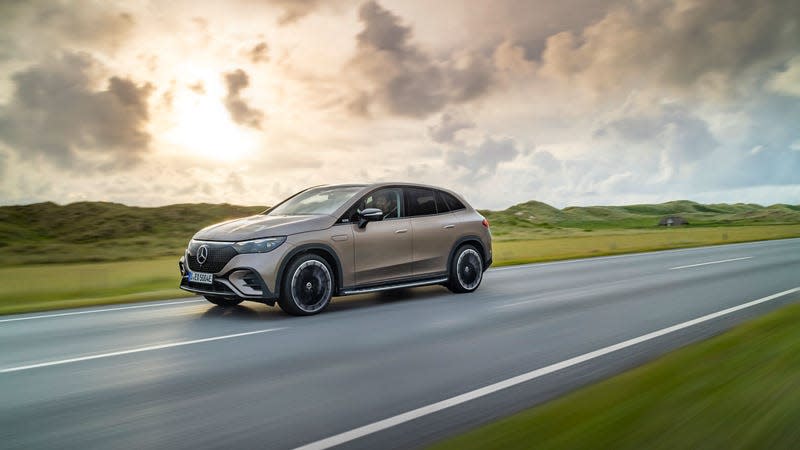
The latest electric model from Mercedes-Benz is the new EQE SUV, which is being built at the German automaker’s Alabama plant here in the U.S. This means that the new battery-powered SUV qualifies for the tax breaks announced as part of the Inflation Reduction Act.
The EQE SUV will begin arriving in Mercedes dealers this spring and starts at $77,900 including destination and delivery fees. For that, you’ll get a battery-powered range of around 300 miles and a whole niceties that you’ve come to expect from Mercedes.
Cadillac Lyriq

Asian-market Cadillac Lyriqs are produced in China, but North America-bound crossovers are built right here in the United States. Cadillac builds the electrified crossover in Spring Hill, Tennessee, alongside the company’s similarly-sized ICE vehicles.
The Cadillac Lyriq starts at $62,990 before the tax credit, and claims up to 312 miles of range from its 100 kWh battery. Deliveries for preorder customers just started last month, so don’t be surprised if it takes a few more months to see one on a showroom flow.
Chevrolet Bolt EUV
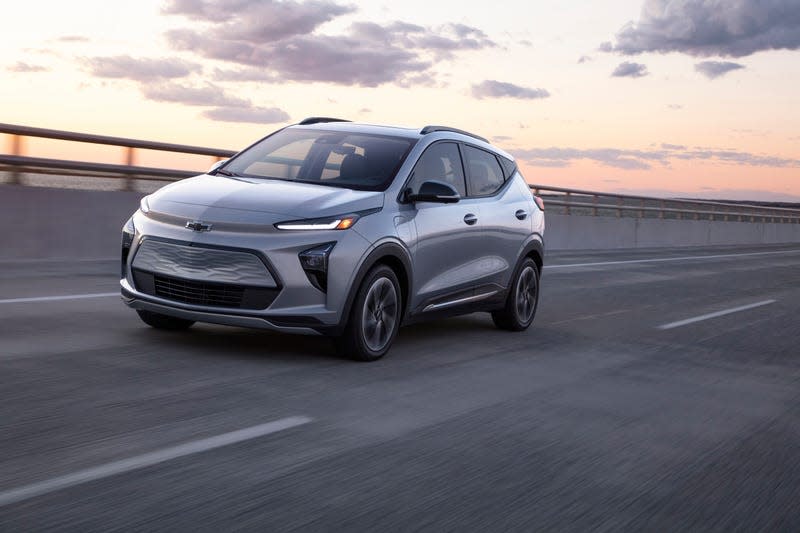
The Bolt EUV is built at GM’s Orion Assembly plant in Michigan, which used to make the Chevy Malibu, Chevy Sonic, and Pontiac G6. The Bolt crossover is probably an upgrade.
Chevrolet claims the Bolt EUV can hit 247 miles from its 65 kWh battery, and it starts at only $27,200. At that price, it’s the second-cheapest vehicle that qualifies for the deduction, which would bring its starting price down below the $20,000 mark. Not too shabby, but it’s outpriced by...
Chevrolet Bolt EV

The Chevy Bolt is also built in Michigan, at the Orion Assembly plant. Currently, it’s unclear what will come of the plant after the Bolts are discontinued, but for the time being, both cars still qualify.
The Bolt loses a bit of height and length from the Bolt EUV, but gains another 12 miles on the EPA cycle in trade. It also loses a few grand in price, coming in at a mere $25,600 before the discount.
Ford F-150 Lightning
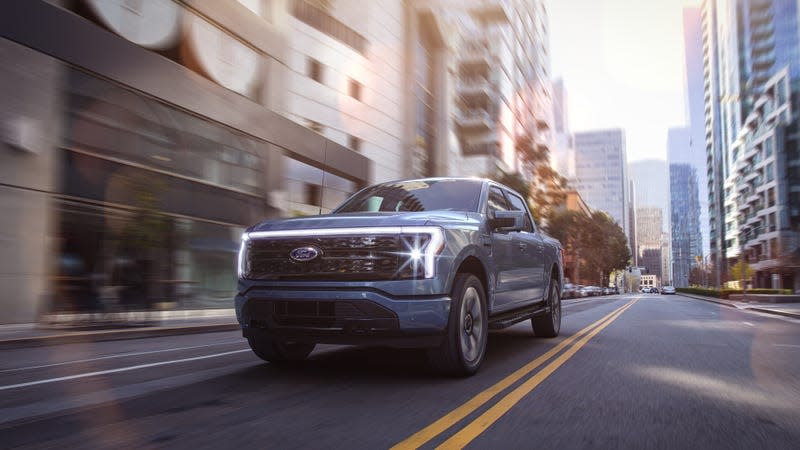
The Ford F-150 Lightning is assembled at Ford’s Rouge Electric Vehicle Center in Dearborn, Michigan. The company even expanded the facility to up production of the Lightning after initial preorders far outstripped estimates.
The Lightning’s price recently jumped as orders opened for 2023 models, moving the base cost from just under $40,000 to $46,974 — and it options up quickly from there. Standard range is 240 miles, though the truck can also be had with an optional range-extended battery.
Ford Mustang Mach-E
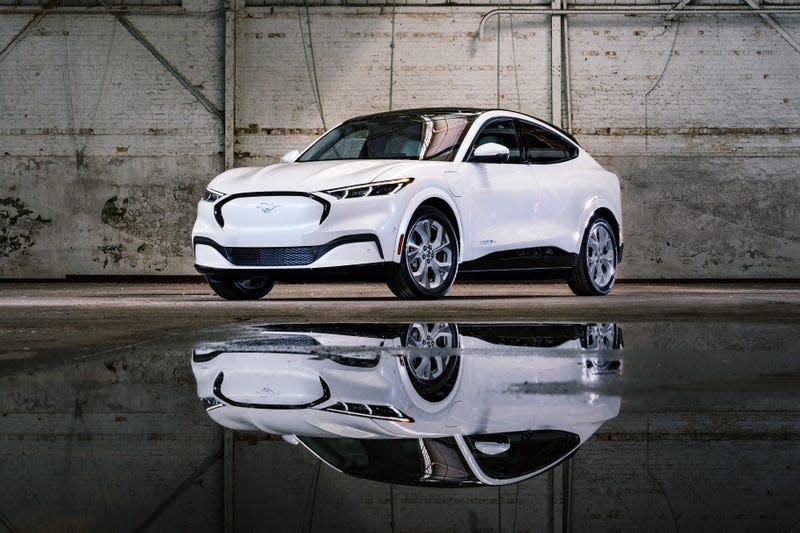
The Mustang Mach-E is a uniquity on our list — the only car manufactured in Mexico rather than the United States. Ford also produces the crossover in China, for the Chinese market, but global cars all come from south of the border.
The Mach-E starts at $43,895, and Ford claims 224 miles of range are capable with the car’s smallest-battery and AWD configuration. From there, range only goes up with RWD or larger-capacity trims.
GMC Hummer EV
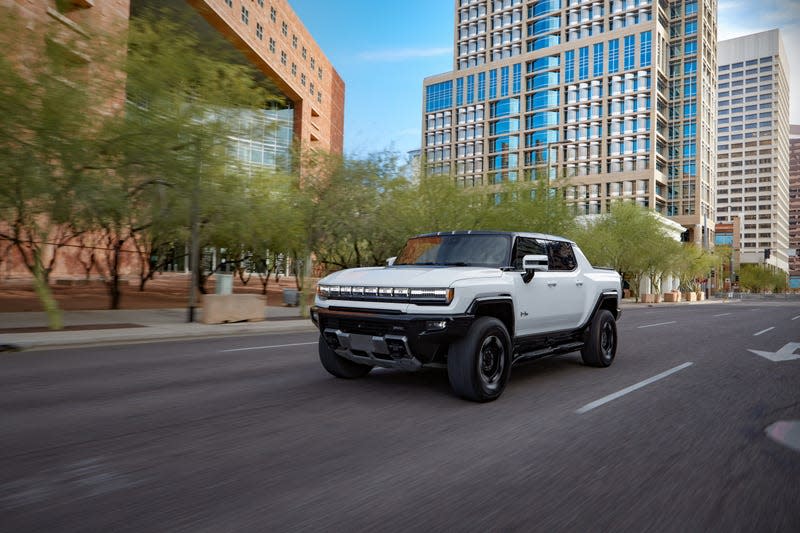
The GMC Hummer EV is built in Factory ZERO, an EV-only facility in Detroit. The plant will also build the Silverado EV, and a vehicle specific to GM’s Cruise AV subsidiary.
The Hummer EV starts at $84,650, if you’re willing to wait until 2024 to get your hands on one. Trims that come more quickly will cost you six figures, and can run even more on the used market. For that money, you’re getting 329 miles of range and a vehicle that’s too heavy to drive on a standard license in Europe.
Lucid Air
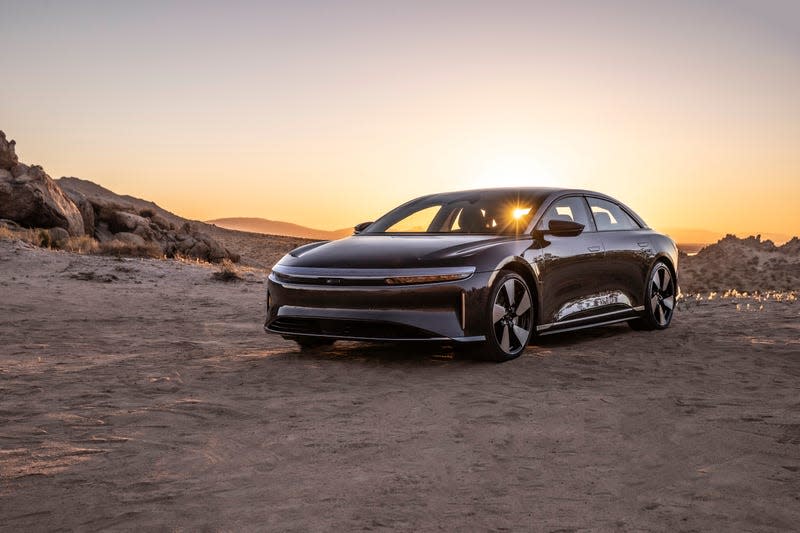
The Lucid Air is built in the company’s only plant, located out in Arizona. I went to Arizona once and got heat exhaustion, and spent a few hours in the fetal position sucking on water bottles in the back of a rented Subaru Forester with the AC blasting, but it does make for a good backdrop in the company’s press photos.
The Air claims an astounding 520 miles of range, the best of any EV on the market today. Of course, to get all that range, you would have had to purchase the car’s launch edition for a whopping $169,000. More consumer-spec Airs get a still commendable 406 miles of range, and start at a marginally more pedestrian $87,400.
Nissan Leaf

One might think the Nissan Leaf, being a small electric car in a country that dislikes and distrusts anything small or electric, would be an import from Japan. One would be wrong, though — U.S.-market ‘Leaves’ are built in Tennessee.
The Leaf is one of the more attainable EVs on our list, starting at $27,800. In its highest-range trim, it still claims a full 226 miles of range. I assure you, that’s enough to get to work and back.
Rivian R1S

The Rivian R1S comes from Illinois, out of the carcass of a former Mitsubishi plant that’s been rebuilt by Rivian. The first vehicles to leave that plant (it’s older truck brother), in the early prototype phase, went straight to the southern tip of South America to accompany two actors on some road trip.
The R1S starts expensive, at $72,500, and options up with Porsche speed. The company claims the big-battery, AWD trim still get 316 miles of range, despite the SUV’s weight and number of driven wheels. You’ll like every mile you spend in it.
Rivian R1T

Rivian only has the one factory, so it should be no surprise that the R1T also makes this list. All Rivians hail from Normal, Illinois, though I can attest that any large truck capable of pinning you to the driver’s seat with acceleration is anything but normal.
The R1T starts slightly cheaper than its closed-back sibling, at $67,500. It also nets two fewer miles of claimed range, down to 314. R1T owners, however, get the mythic gear tunnel to load up with camping gear, wetsuits, or an entire camp kitchen.
Tesla Model 3
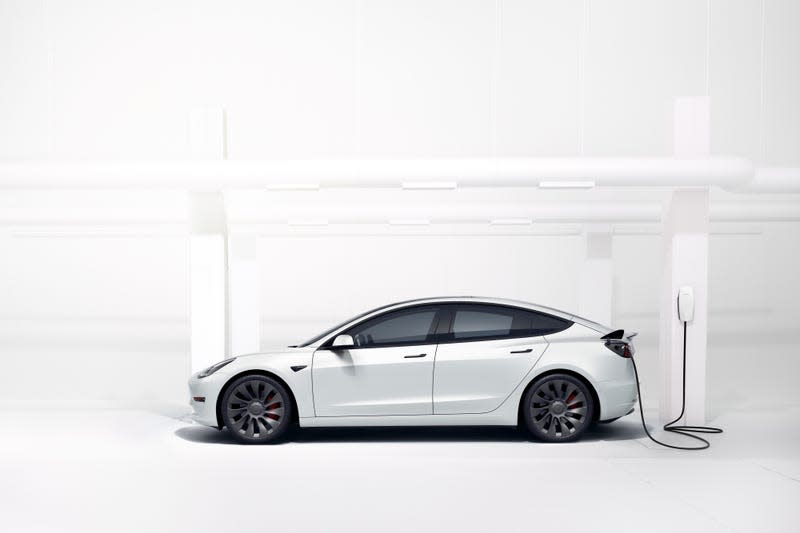
Tesla has factories in three countries now, but it still makes its U.S.-bound Model 3s in the United States. Elon Musk claimed that global models would also come from the U.S., but like some things Musk says, that hasn’t quite panned out.
The Model 3 is Tesla’s budget model, starting at $46,990. The company claims 272 miles of range in base spec, and 358 in long-range trim. Prices vary often, so check the current going rate before deciding to make a purchase.
Tesla Model S

I think you can guess the next few cars on this list. Like the Model 3, the Model S is built in Fremont, CA, at the former NUMMI plant now called the Gigafactory.
The Model S is no budget-minded cruiser, starting at $104,990. That six-figure starting point gets you a full 17 more miles of claimed range than the top-tier Model 3, bringing the total up to 375.
Tesla Model X
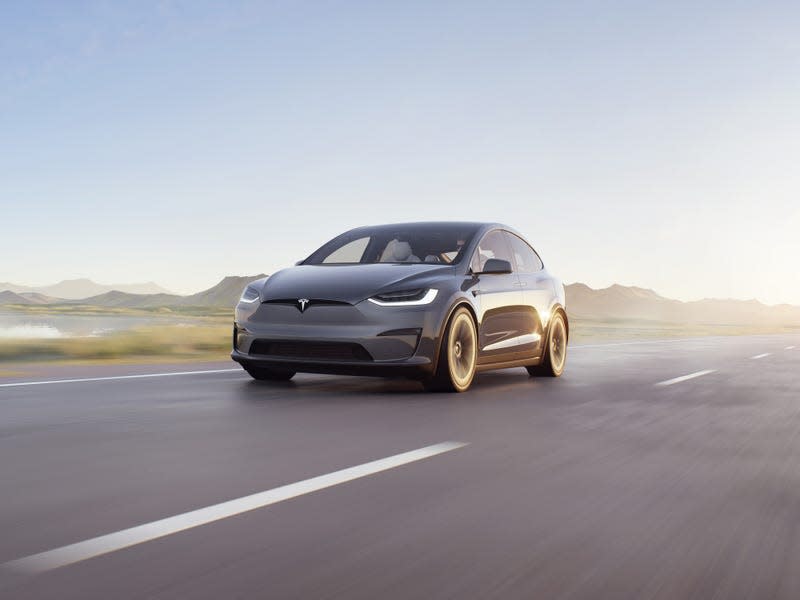
Surprise, surprise, another Tesla. The Model X is exclusively built in Fremont, California, right alongside the Model S. No German or Chinese construction to be found under that badge, in any market.
The Model X starts even higher than the Model S, with the highest base price of any vehicle on our list. It’s a whopping $120,990 for a base model, and $138,990 for the top-tier Plaid. Even at that price, no trim level exceeds 330 miles of claimed range.
Tesla Model Y
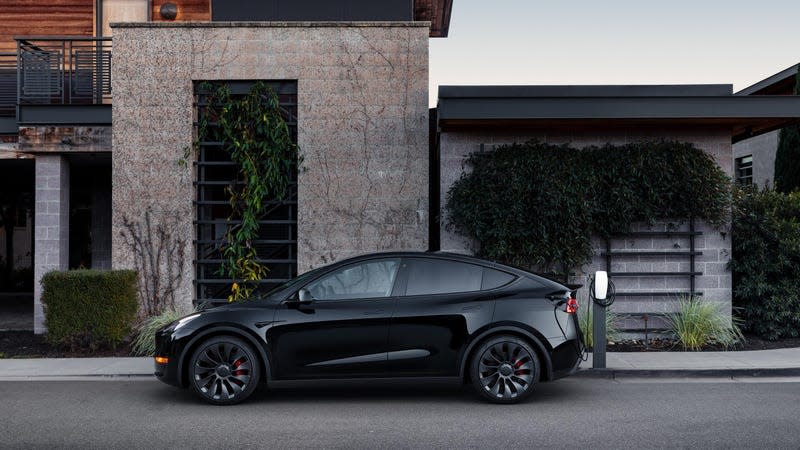
The Model Y is another internationally built Tesla, with models coming out of the U.S. and China and plans for more in Germany. American buyers, however, will only receive American-built cars.
The Model Y starts at just under half the cost of a top-tier X, only $65,990. It’s still one of the pricier vehicles on our list, but it’s better than its bigger brother. That price benefit comes with a range hit, though — only 318 miles in Long Range trim.
Volkswagen ID.4
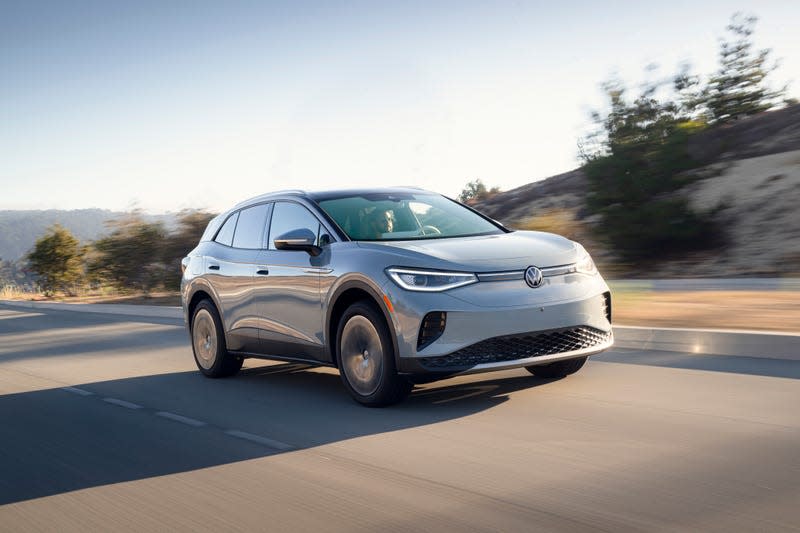
The Volkswagen ID.4 is built at four plants internationally, but only one matters for U.S. buyers — Chattanooga, Tennessee. The company recently started assembling ID.4s stateside, but will likely move to only delivering these vehicles to American customers once the tax credit goes into effect.
The ID.4 is both the second and the last foreign vehicle on the list, but its German badge still sells for less than much of the American competition. $37,495 to start, with 208 miles of range, but the car can be optioned up to a more road-trip capable 275-mile battery.
More from Jalopnik
Sign up for Jalopnik's Newsletter. For the latest news, Facebook, Twitter and Instagram.

 Yahoo Autos
Yahoo Autos 